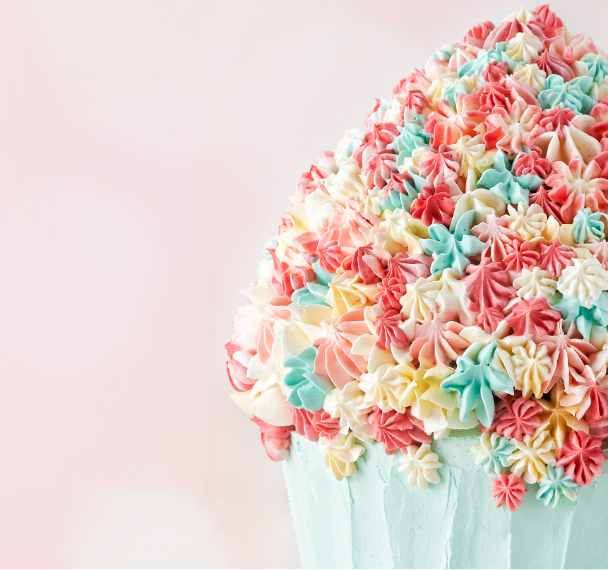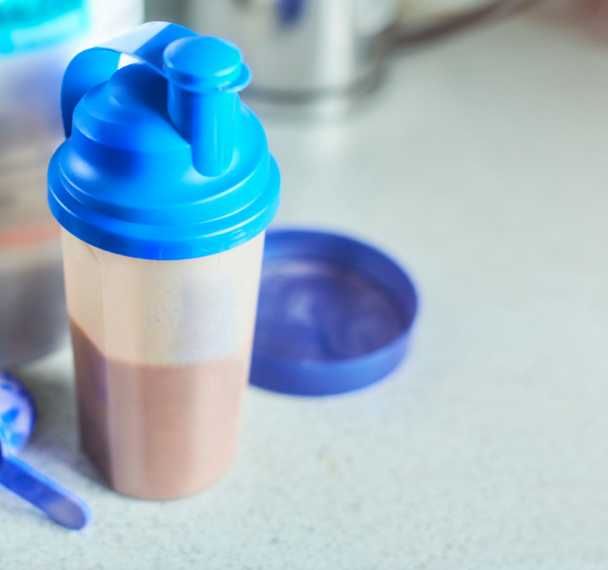The Sweet Story of Vanilla: From Bean to Extract
Jul 20, 2023
Introduction
As a product developer, food entrepreneur, or business owner, it is crucial to possess an in-depth understanding of the ingredients you work with, both from practical and ethical standpoints. This is especially true for vanilla, one of the world's most labour-intensive and costly crops.
In this blog post, we'll explore the fascinating world of vanilla - revealing its cultivation and curing processes responsible for its flavour development and examining the extraction process that yields rich vanilla extracts and its renowned characteristic aroma compound: vanillin. Additionally, we will discuss more cost-effective and sustainable alternatives to vanilla extracts.
From vanilla plant to vanilla beans

Origin
The Totonaco Indians of Mexico first uncovered the flavours of cured vanilla beans through a four-stage curing process. Later on, the Aztecs utilised these cured vanilla beans to elevate their "chocolatl", a beverage consisting of water, ground roasted cocoa beans, and a touch of honey.
It was during the Spanish conquest of Mexico in 1520 that the conquistadors, led by Hernando Cortez, discovered vanilla and subsequently sent the beans back to Spain where it was an instant success. The first commercial vanilla and cocoa shipments to Spain began in 1585; and quickly spread to the rest of Europe.
Commercialisation
Presently, the majority of the world's vanilla bean production takes place in Madagascar, while other significant contributors include Indonesia, Mexico, China, Papua New Guinea, and Uganda.
A large portion of the world's total vanilla yield is imported by the United States, with the European Union accounting for most of the remaining imports. The production of vanilla extract is primarily consumed by the dairy and beverage sectors.
Vanilla plant & cultivation
Originating from southeast Mexico and Central America, the vanilla plant (Vanilla Planifolia) belongs to the orchid family. The ideal environment for this vine to thrive is within moist, partially shaded tropical forests situated near the equator, with consistent temperatures between 25-28°C.
Climbing vines are the primary type of vanilla species grown, capable of reaching up to 20 metres in height on forest trees. These vines start to flower when they reach two years, yet bean production doesn't commence until their third year. At around eight years of age, the plant's vitality peaks and it continues producing for another 12-14 years.
The plant's yellow flowers only bloom for a very short period, between 12 and 24 hours each year. Due to its inability to self-pollinate and limited access for insects, each blossom must be hand-pollinated within this limited time frame.
It takes roughly eight months for the beans to reach full maturity. As they begin to ripen and turn yellow, each bean is handpicked prior to full maturity, as this is the optimal harvest time to ensure superior quality beans with the highest vanillin content.
Initially, these vanilla beans possess neither flavour nor aroma, which are developed during the curing process.
The primary threats to vanilla plantations include hurricanes, fusarium disease, and the theft of the invaluable unripe beans. These beans possess such high commercial value that each one is marked with a unique tattoo for identification purposes.
What is Bourbon vanilla?
Bourbon vanilla refers to the vanilla (Vanilla Planifolia) cultivated in Madagascar and other Indian Ocean islands, such as Comoros and Réunion. Upon the French acquisition of Reunion Island, King Louis XIII of the Bourbon dynasty named it "Bourbon Island." It is from this island's name that the term Bourbon Vanilla originated.
Vanilla curing process
After harvesting the beans, they undergo an extensive curing process to bring out their unique flavours. Various countries follow different curing methods.
Blanching
In Madagascar, the curing process of vanilla beans begins with blanching the unripe beans. The beans are soaked in hot water for around 2-3 minutes to break down the inner cell walls and activate the enzymes for the next stage.
Sweating
Throughout the day, the beans are spread on blankets under the sunlight and subsequently covered by the same blankets during the night. This process continues for about 10 days. In this period, enzymatic hydrolysis and fermentation of sugars take place, resulting in the formation of aroma compounds like vanillin, as well as formic acid and lactic acid.
Drying
The vanilla beans are dispersed across open trays and placed in a well-ventilated storage area for a period of two months. During this interval, they lose approximately 80 percent of their weight and develop additional flavours due to numerous chemical processes, including Maillard reactions triggered by the heat.
In Mexico, the procedure has its own unique complexities while still sharing some similarities. The unripe vanilla beans are partially dried, bypassing the blanching phase. They are then repeatedly subjected to a sweating process within enclosed wooden boxes and then dried.
In Indonesia, the procedure excludes both blanching and sweating stages. Immature vanilla pods are harvested and subsequently dried over open flames, giving them a distinct phenolic and smoky characteristic. Nowadays, most Indonesian vanilla beans are harvested at the optimal ripeness level, to produce beans with a higher vanillin content, similar to the Madagascan technique.
Prior to being sold, the vanilla beans are sorted, classified, and allowed to age for a few months.
Vanilla extract and vanillin molecule

Vanilla extract
After the curing process, the beans are prepared for transformation into vanilla extract. Initially, the vanilla beans are chopped into smaller pieces and placed into a mildly heated percolator that contains a blend of alcohol and water.
Alcohol serves as a solvent to extract flavour compounds from vanilla beans, which is made more effective by cutting the beans to increase their surface area. Various types of alcohol may be employed; however, ethanol is predominantly used in the production of commercial vanilla extracts.
Percolation can take several hours or even days to complete. As the blend rests for an extended period, its flavour complexity increases. Mixing various beans is a prevalent technique to maintain consistency in the face of fluctuating bean quality.
Vanilla is one of the most expensive spices in the world, coming in just after saffron. This makes vanilla extracts very expensive flavours.
The vanilla species and the terroir of where vanilla is grown will give each bean a unique flavour:

Natural and non natural Vanillin
Vanillin is a key aroma compound present in vanilla extracts, contributing to its sweetness, creaminess, and distinctive vanilla aroma. This aroma compound is not only used in vanilla flavourings but also in caramel, chocolate, marshmallow, and certain fruit flavourings.
Vanillin was first identified in the early 1800s when the pure compound was obtained through alcohol extraction of vanilla beans. In response to consumer demand in the late 19th century, a synthetic variant of vanillin (ethyl vanillin) was developed. This molecule, slightly different from natural vanillin found in vanilla beans, served as a more cost-effective and ten times stronger alternative to natural vanilla extract and vanillin.
Since its introduction, the highly versatile synthetic ethyl vanillin has been widely used in various applications such as baked goods, dairy products, cereals, confections, beverages, and even cosmetics. This sweet and creamy vanilla flavour has become the familiar taste most people associate with vanilla.
Nowadays, the ethyl vanillin molecule continues to be produced while another non-natural variant, which is identical to the natural vanillin molecule, has emerged. This alternative can be derived from curcumin, eugenol, wood lignin, and guaiacol through chemical processes.
Natural vanillin can be obtained either by extracting it from vanilla beans or by fermenting ferulic acid, which is sourced from rice.
Other vanilla flavour options
As we anticipate in the future, climate change may impact the production of vanilla extract. However, alternative options are available:
Natural flavourings: This approach offers versatile and more cost-effective solutions for creating vanilla flavours. It presents a wide variety of flavour profiles while being a more eco-friendly option.
Non-natural flavourings: While ethyl vanillin has been the most popular substance for creating vanilla flavours, it is not the only choice. Non-natural vanilla flavourings offer even greater versatility in flavour profiles, cost-effective and environmentally friendly solutions.
Conclusion
In conclusion, understanding the intricacies of vanilla cultivation, curing, extraction processes and flavour profiles is imperative for those in the food and beverage industries.
With the labour-intensive and costly nature of this precious crop and the chemistry behind its unique aroma compounds, vanilla extracts truly deserve our appreciation and mindful use.
As a food entrepreneur, product developer, or business owner, gaining a deeper understanding of vanilla extracts not only leads to better decision-making regarding sustainable and cost-effective alternatives, but also encourages a meaningful connection to the complex world that brings flavours to us.
Link to related blogs you may enjoy
🔶Uncovering The Flavours Of Chocolate Series | The Impact Of Cacao Variety & Genetic
🔶Uncovering The Flavours Of Chocolate Series | The Impact Of Cacao Origin & Terroir
🔶The Secret Of Cacao | First Steps Towards Chocolate: Harvest & Process
🔶Uncovering The Flavours Of Chocolate Series | The Impact Of Cacao Process
References
Previous experience includes working at a flavour house, where I received comprehensive flavour trainings among vanilla extracts and flavourings.
Gary Reineccius, Flavour chemistry and technology, second edition, 2006
John Wright, Flavor Creation, 2004
Rebecca Rupp, The History of Vanilla, National Geographic, 2014 https://www.nationalgeographic.com/culture/article/plain-vanilla?loggedin=true&rnd=1689173201063








